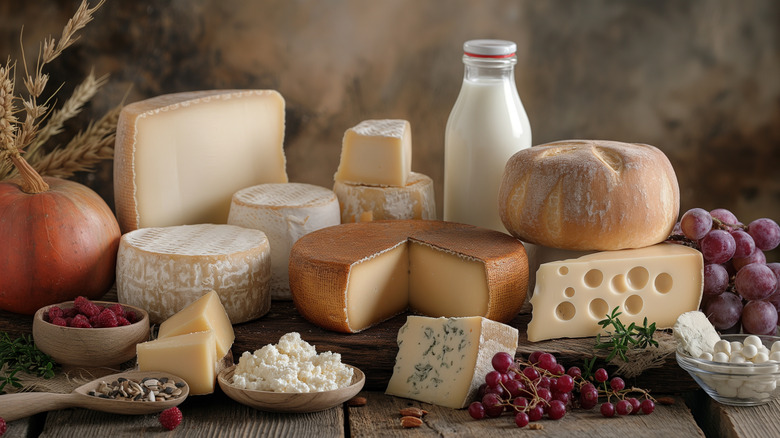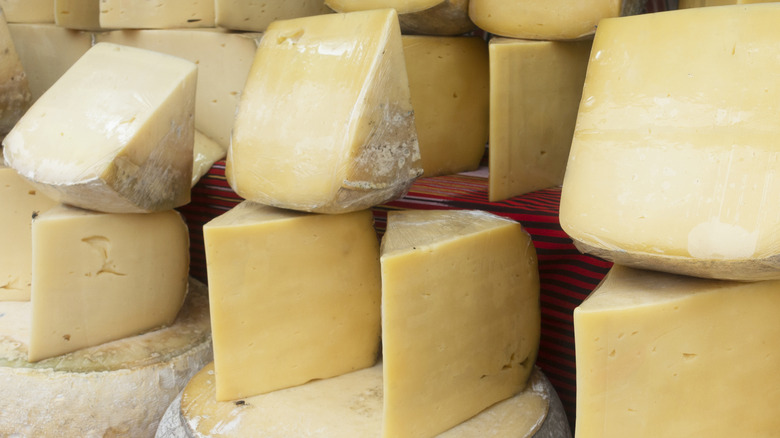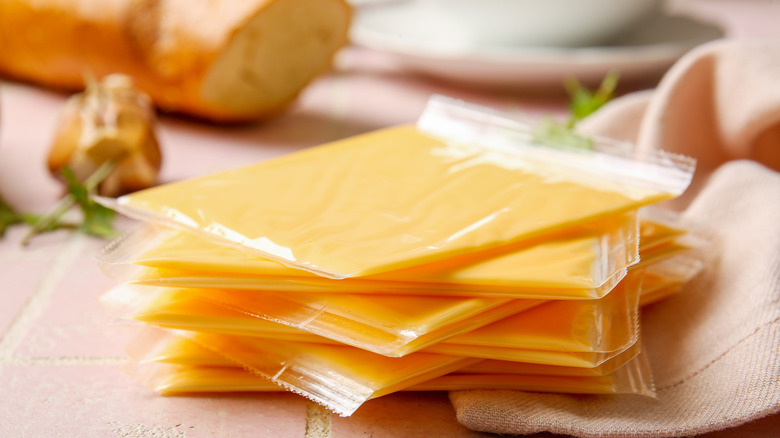Processed Vs Unprocessed Cheese: What's The Difference?
There are plenty of processed foods we rely on, such as deli meats like turkey or ham, and the same is true for cheese. In fact, cheese largely falls into two groups: natural and processed. Natural cheeses are minimally modified, but in the case of cheese, what does it mean to be processed? Processed cheeses are defined by not exclusively being cheese, as they include additives such as other dairy products, salt, preservatives, or emulsifiers. Processed cheese goes through the same starting steps that natural cheese does, but then it endures other modifications. Think of the difference between a slice of fresh hard cheddar versus an American cheese slice — they have the same base, but come out tasting and feeling very different.
In fact, American cheese has its own unique FDA guidelines, mainly due to being processed and handled differently than natural cheese products. The point is, all cheese must go through some form of processing to turn from liquid milk into curds and then into the cheese we see in stores, but many products nowadays take it a step further to enhance either flavor, longevity, or simplicity of use.
What is unprocessed cheese?
So what is natural cheese? It is cheese that is made from fresh milk and doesn't contain any additives or go through additional manipulation beyond the regular preparation. The four key steps of making cheese are curdling or coagulating the milk (usually with cultures like rennin or an acid, which takes longer), draining it, salting it, and then letting it age. These steps can have variations depending on the type of cheese, such as cheddar versus goat, but no other substances are added to the cheese. The result is the natural cheeses we know and love that appear on our grilled cheese sandwiches and Southern-style charcuterie boards: hard, soft, blue-veined, and stretched curd.
These cheeses have a wide range of flavors and are great in all manner of recipes. Classics like ricotta and parmesan pair well with hearty pasta dishes, while unripened varieties, such as cottage or cream cheese, can be a great spread or even substitute ingredient in sauces or baked goods. In truth, natural, minimally processed cheeses aren't going anywhere, and are still the dominant form of this dairy product.
What is processed cheese?
In many cases, processed cheese is easy to identify — it's safe to assume cheese that squirts out of a can has gone through a bit more alteration than natural cheese. But how does this type of cheese get made? Processed cheese goes through extra steps — including emulsification, extra pasteurization, and often melting as outside ingredients get added in beyond the initial cultures and salt. In the most basic cases, processed cheese can simply be the combination of two types of cheeses, but often it includes preservatives that give that highly meltable effect.
Other than squeezy and American cheese, other processed cheeses are spreads used in some snack packs, nacho or queso dip, and even some deli slices. While they may not appear as obviously processed, varieties that are labeled as 'smoked' also aren't technically natural. It's a matter of understanding what processes make an item "processed," even if the cheese itself may not look like it's been changed or added to. Similarly, anything that's labeled as a vegan or plant-based cheese is going to be processed.
Note that though it depends on the store, the price of processed American cheese singles is often similar to (or only slightly less than) natural alternatives. So for those who are cautious of their spending on grocery trips, this is one area where unprocessed foods will not blow your budget.



